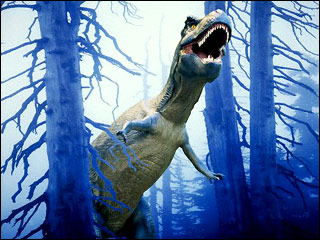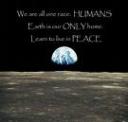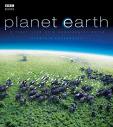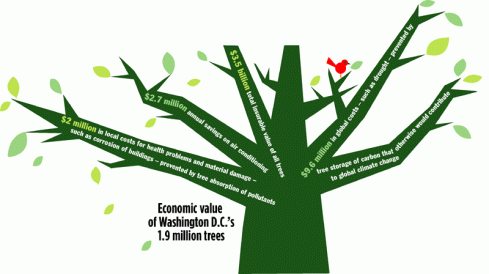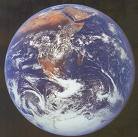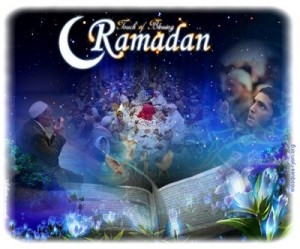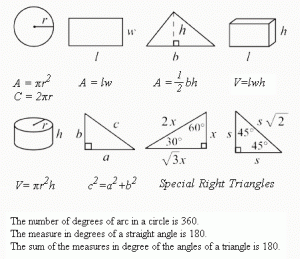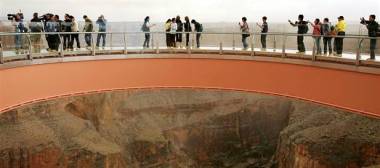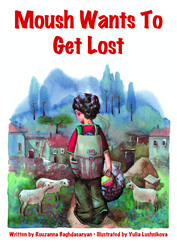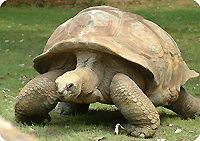
Storm Watch on Mars
April 10, 2022Wow… you are watching a storm on another planet, Mars! Some day this may be Earthlings’ new home…… But then we wouldn’t be called Earthlings, now would we?
Mars Storm Watch <~~~~~ Click here to view…

Earth Day is Here…
April 4, 2022Earth Unplugged!
http://reference.aol.com/planet-earth
Take this Quiz!
http://reference.aol.com/planet-earth/discovery/by-the-numbers

Great Math Quests!
March 28, 2022Hello Kiddies,
I know how you guys love MATH <hah> and I know how you love to play games. I found a great website that combines both. I know you guys will love to play while you learn and learn while you play. Have fun. Whoever masters their adventure first wins a prize! 😛
Click Away…

Fact Monster
March 27, 2022
~In Honor of April Fool’s Day~
March 27, 2022You Know What They Say About Fools…
- It’s better to keep your mouth shut and be thought a fool than to open it and leave no doubt. —Mark Twain
- However big the fool, there is always a bigger fool to admire him. — Nicolas Boileau-Despréaux
- [Politicians] never open their mouths without subtracting from the sum of human knowledge. — Thomas Reed
- He who lives without folly isn’t so wise as he thinks. — François, Duc de La Rochefoucauld
- The ultimate result of shielding men from the effects of folly, is to fill the world with fools. — Herbert Spencer
- Sometimes one likes foolish people for their folly, better than wise people for their wisdom. — Elizabeth Gaskell
- Looking foolish does the spirit good. — John Updike
- Let us be thankful for the fools. But for them the rest of us could not succeed. — Mark Twain
- A fool sees not the same tree that a wise man sees. — William Blake
- A fool must now and then be right by chance. — Cowper
- It is better to be a fool than to be dead. — Stevenson
- The first of April is the day we remember what we are the other 364 days of the year. — Mark Twain

Ramadan
March 23, 2022Part of the Ramadan holiday tradition is for peopleto take a self-inventory of how they can make improvements within themselves. Students in Class X03 also took a self-awareness assessment and came up with different areas that they would like to try to improve.
Dante: I’m going to try to compose myself when I find I’m getting mad. I will try to do a little bit of homework for my grandparents.
Anastasia: I would like to not talk out all the time. I want to learn to stop myself from calling out and respect others.
Michael: I would like to be a better student by working at completing my task faster and paying attention more.
Devin: I will be considerate of others if I need to make myself more comfortable. I understand that this is selfish.
Tyla: I want to refocus myself when I see I begin to drift away from what’s going on in the class or at home.
Nickolas: I want to stop beating up and cursing at my brother. I want to be a better big brother to him so how I can show how to a better person.
Chayanne: Achieving my goals, by doing my schoolwork faster.
Daijore: I would like to be a better student by arriving on time, completing all of my tasks, and completing my homework.
- What is the Islam Religion?
- The word Islam comes from an Arabic root words meaning ‘peace’ and ‘submission. Islam teaches that one can only find peace in one’s life by submitting to Almighty god (Allah) in heart, soul and deed. The same Arabic root word gives us “Salaam alaykum’ which means ‘Peace be with you. ”which is the universal Muslim greeting.
- Islam is a major world religion, with over 1 billion followers worldwide (1/5 of the world population). IT is considered one of the Abrahamic, monotheistic faiths, along with Judaism and Christianity. Although associated with the Arabs of the Middle East, less than 10% of Muslims are in fact Arab. Muslims are found all over the world, of every nation, color and race.
- Who is Muslim?
- A person who believes in and follows Islamic beliefs is called a Muslim, also from the same root word. So, the religion is called “Islam” and a person who believes in and follows it is a “Muslim”.
- What is Allah?
- Allah is the proper name for the Almighty God and is often translated merely as “God”. Allah has that are used to describe his characteristics: the Creator, the Sustainer, the Merciful, the Compassionate.
- What is the Islamic lunar calendar? (Hijrah)
- This calendar has 12 lunar months, the beginnings and endings of which are determined by the sighting of the crescent moon.
- The Islamic calendar is the official calendar in many Muslim countries. However some Muslims also use the Gregorian calendar however for religious purposes they use the Islamic Calendar.
- What is Hijrah?
- This is when the Prophet Muhammad migrated from Mecca to Madhinah.
- The ‘five pillars’ of Islam: In Islam, faith and good works go hand in hand. A mere verbal declaration of faith is not enough for belief in Allah makes obedience to Him a duty.
- Ramadan:
- What is Ramadan?
- Ramadan is the ninth month of the Islamic Lunar Calendar. Every day during this month, Muslims around the world spend the daylight hours in a complete fast.
- It is a time for inner reflection, devotion to God, and self-control. Muslims think of it as a kind of tune-up for their spiritual lives. There are as many meanings of Ramadan as there are Muslims.
- Ramadan is also a time of intensive worship, reading of the Qur’an, giving charity, purifying one’s behavior, and doing good deeds.
- The third “pillar” or religious obligation of Islam, fasting has many special benefits. Among these, the most important is that it is a means of learning self-control.
- Ramadan begins in the ninth month of the lunar calendar and at the first sighting of the new moon. The ending of Ramadan is marked by the celebration of ‘Eid-ul-Fitr, is similarly determined.
- What is ‘Eid-ul-Fitr?
- ‘Eid-ul-Fitr, the Festival of Fast-Breaking. The celebration at the end of Ramadan is called ‘Eid-ul-Fitr (the Festival of Fast-Breaking). It is a joyous occasion, similar to Christmas in its celebration but with strong religious significance. The giving of a special charity for this occasion is obligatory. Muslims dress in holiday attire, attend a special community prayer in the morning, and visit friends and relatives. Greetings of “‘Eid mubarak,” or “a blessed ‘Eid” are exchanged. In some places, children are given gifts or money by their parents and relatives.
- The celebration of ‘Eid-ul-Fitr lasts three days, although the main festivities occur on the first day. In Fort Collins, Muslims gather in a community center for prayer and a community breakfast. Students and workers of all ages take time off from school and work whenever possible. Muslims in the United States are trying to gain recognition of ‘Eid-ul-Fitr, one of their two main festivals, as an official holiday.
- When does fasting (sawm) begin?
- The daily period of fasting starts at the breaking of dawn and ends at the setting of the sun. In between — that is, during the daylight hours — Muslims totally abstain from food, drink, smoking. This is to demonstrate self discipline. The usual practice is to have a pre-fast meal (suhoor) before dawn and a post-fast meal (iftar) after sunset.
- A secondary goal, fasting is a way of experiencing hunger and developing sympathy for the less fortunate, and learning to thankfulness and appreciation for all of God’s bounties. Fasting is also beneficial to the health and provides a break in the cycle of rigid habits or overindulgence.
- What is a Qu’ran (Koran)?
- The Qur’an is the central religious Verbal-Book of Islam, also sometimes transliterated as Quran, Kuran, Koran, Qur’ān, Coran or al-Qur’ān. It is widely regarded as the finest piece of literature in the Arabic language. Muslims hold that the Qur’an is the verbal divine guidance and moral direction for mankind. Muslims also consider the original Arabic verbal text to be the final revelation of God.]
- Muslims holds that the Qur’an was repeatedly revealed from Allah to Muhammad verbally through the angel Jibrīl (Gabriel) over a period of approximately twenty-three years, beginning in 610 CE, when he was forty, and concluding in 632 CE, the year of his death.

Vernal Equinox
March 18, 2022Equinoxes and solstices
The ecliptic
During the course of a year the Earth completes one orbit around the Sun. To us on Earth we see this as the Sun moving against the background of stars through the year, along an imaginary line which we call the ecliptic. This defines the plane in which the Earth and most of the other planets orbit around the Sun. The directions to the north and south ecliptic poles are at right angles to this. The Zodiac is the band of constellations running along the ecliptic.
The celestial poles and celestial equator
The Earth’s orbit around the Sun takes 365.25 days, and a ‘day’ is, of course, defined as the Earth spinning once on its axis. The Earth’s axis of rotation, tilted at 23.5 degrees to the line of the poles of the ecliptic, gives us the directions to the north and south celestial poles. The bright star Polaris is currently showing us the direction of the north celestial pole. Like a spinning top this axis is precessing around the ecliptic pole with a period of 26,000 years.
The celestial equator is the projection of the Earth’s equator onto the sky. As the Sun moves in its apparent track along the ecliptic it is for half the year seen to be above the equator (northern summer) and half the year below the equator (northern winter). The Sun will therefore appear to cross the equator twice in a year.
The equinoxes
At the times when the Sun is crossing the celestial equator day and night are of nearly equal length at all latitudes and so we call these dates the equinoxes. In March, as the Sun is moving northwards along the ecliptic, this is called the vernal equinox and in September as the Sun is moving southwards we refer to it as the autumnal equinox. The equinoxes are also the points on the celestial sphere where the ecliptic and equator cross and the vernal equinox is used as the zero point in measuring star co-ordinates.
Why do the equinoxes not always occur on the same days each year?
The Earth takes approximately 365.25 days to go around the Sun. This is the reason we have a leap year every 4 years, to add another day to our calendar so that there is not a gradual drift of date through the seasons. For the same reason the precise time of the equinoxes are not the same each year, and generally will occur about 6 hours later each year, with a jump of a day (backwards) on leap years. The table below shows the dates and times of of both the vernal (spring) and autumnal equinoxes for a period of ten years:
| Year | Vernal equinox | Autumnal equinox | Leap year |
|---|---|---|---|
| 2000 | 20 March, 07.35 | 22 September, 17.27 | yes |
| 2001 | 20 March, 13.31 | 22 September, 23.04 | |
| 2002 | 20 March, 19.16 | 23 September, 04.55 | |
| 2003 | 21 March, 01.00 | 23 September, 10.47 | |
| 2004 | 20 March, 06.49 | 22 September, 16.30 | yes |
| 2005 | 20 March, 12.33 | 22 September, 22.23 | |
| 2006 | 20 March, 18.25 | 23 September, 04.03 | |
| 2007 | 21 March, 00.07 | 23 September, 09.51 | |
| 2008 | 20 March, 05.48 | 22 September, 15.44 | yes |
| 2009 | 20 March, 11.43 | 22 September, 21.18 | |
| 2010 | 20 March, 17.32 | 23 September, 03.09 | |
| all times are UTC (GMT) | |||
In fact it is only after a complete leap-year cycle of four centuries that these dates will be repeated. In the present century the times of the equinoxes have ranged between the latest dates – March 21 at 19h and September 24 at 06h (in 1903) – to the earliest dates – March 20 at 08h and September 22 at 17h (in 2000).
Why do the dates of the vernal and autumnal equinox not occur on the days when day and night are equal?
A quick look at sunrise and sunset times on successive days in March and September will show that the above dates do not coincide precisely with the times of equal day and night length. There is another factor to be considered which is that the orbit of the Earth around the Sun is an ellipse and not a circle. By Kepler’s Law the Earth moves fastest when it is closest to the Sun (approximately 3 January each year) and slowest when it is furthest away (approximately 4 July ). This ‘unequal motion’ causes variations in the length of the solar day and in the times of sunrise and sunset.
The equation of time
The combined effects mean that the Sun does not cross the meridian (when it is highest in the sky) at precisely local noon each day. The difference between clock-defined noon and the time when the Sun is on the meridian is called the Equation of Time and represents the correction which must be applied to the time given by a sundial to make it agree with clock time. This correction can be as much as 16 minutes in either direction. For more information, see our fact file on the the equation of time.
The solstices
The times when the Sun is at its furthest from the celestial equator are called the summer and winter solstices and these occur in mid-summer and mid-winter.
| Year | Summer | Winter | Leap year |
|---|---|---|---|
| 2000 | 21 June, 01.48 | 21 December, 13.37 | yes |
| 2001 | 21 June, 07.38 | 21 December, 19.21 | |
| 2002 | 21 June, 13.24 | 22 December, 01.14 | |
| 2003 | 21 June, 19.10 | 22 December, 07.04 | |
| 2004 | 21 June, 00.57 | 21 December, 12.41 | yes |
| 2005 | 21 June, 06.46 | 21 December, 18.35 | |
| 2006 | 21 June, 12.26 | 22 December, 00.22 | |
| 2007 | 21 June, 18.06 | 22 December, 06.08 | |
| 2008 | 20 June, 23.59 | 21 December, 12.04 | yes |
| 2009 | 21 June, 05.45 | 21 December, 17.47 | |
| 2010 | 21 June, 11.28 | 21 December, 23.38 | |
| all times are UTC (GMT) | |||
(Note: Don’t be fooled by the fact that during this period the summer solstice always occurred on 21 June. This is just a feature of the slow drift through the dates on a 400 year cycle mentioned above. The last time the solstice was not on this date was 1975 when it occurred on 22 June at 00.27 and in the year 2012 it will occur on 20 June at 23.09. For the dates in between the summer solstice will fall on 21 June.)
The apparently odd behaviour of sunrise/set times near the winter solstice
The winter solstice is the time when the Sun reaches its southmost distance from the celestial equator and hence, in northern latitudes is the day when the Sun is lowest in the sky at noon. This is, naturally, the shortest day of the year in northern latitudes. To many people it seems odd, therefore, that the time of sunrise continues to get later in the day after the solstice.
The period when the Equation of Time is changing fastest in the whole year is very close to the winter solstice. It changes by 10 minutes from 16 December to 5 January. This means that the time at which the Sun crosses the meridian changes by 10 minutes in this interval and also that the times of sunrise and sunset will change by the same amount.
Near the winter and summer solstices the Sun’s height in the sky changes very slowly and the length of the day also changes slowly. The rapid change due to the Equation of Time dominates the very slow change in day length and leads to the observed sunrise times.
What is the difference between Midsummer Day and the summer solstice?
Midsummer Day is June 24 (each year) and is one of the four Quarter Days in the Legal Calendar. The other Quarter Days are Lady Day (March 25), Michaelmas (29 September) and Christmas Day (25 December). The Summer Solstice is explained above.

Big Universe
March 13, 2022Our students were introduced to a new online reading program called Big Universe this year. We have been using it for read alouds but now the students have their own accounts and can pick books and add them to their book shelves! Read on kiddies!
